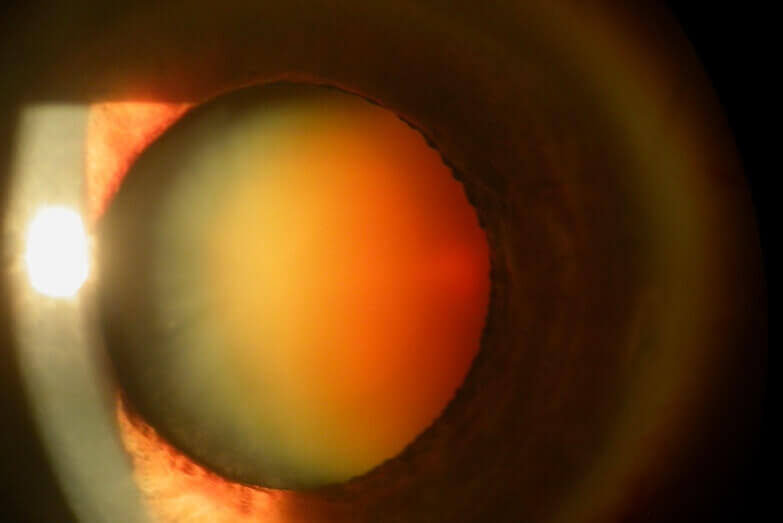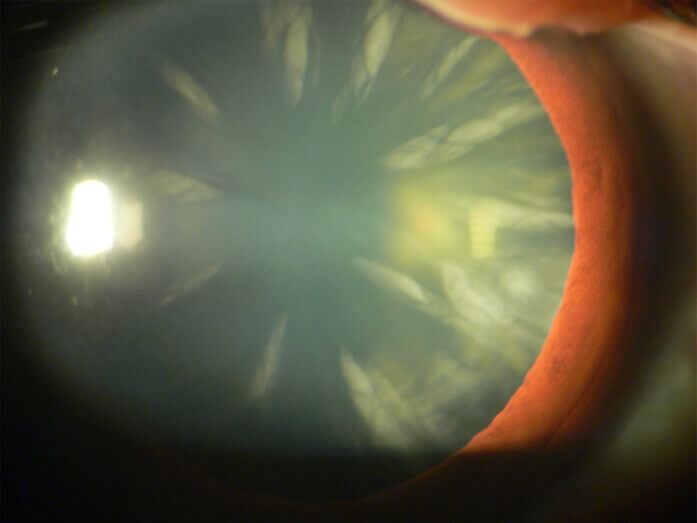Cataracts
The Problem:
- Over time vision decreases.
- You may experience glare or halo with light
- Colors are perceived differently
- Greater difficulty reading or seeing in the distance even with glasses or contact lenses
- Tearing from increased light sensitivity
- Poor night vision
- Double vision (often from only one eye)
How this affects you:
- Difficulty reading
- Difficulty driving during the day and especially at night
- Glare while participating in outdoor activities, such as golfing, surfing, or exercising.
- Difficulty working on the computer
- Unable to comfortably complete your normal daily tasks (e.g. work, house work, etc.
What is happening?
The lens in the eye, together with the cornea at the front of the eye, focus images to the retina in the back of the eye. Over time the clear lens in the eye becomes cloudy and begins to blur the image at the back of the eye. If untreated this condition will worsen with gradual decreasing vision. Cataracts tend to be bilateral, so visual decrease tend to affect both eyes equally.


What can be done about it?
Options:
Observation – some people choose to wait until the problem becomes intolerable/disabling. There are legal limits to how poor visual acuity becomes before surgery will become necessary in order to renew a driver’s license.
Surgery – indicated if the problem has begun to affect your lifestyle or becomes a safety obstacle in doing the things you want to do.
Cataract Surgery
Cataract surgery is a procedure performed on the eye.
- The side to be operated on is marked before surgery
- Numbing eyedrops are given along with IV anesthesia to make the procedure as relaxing as possible.
- Entry is made into the eye with a diamond blade and another instrument, called a phacoemulsification handpiece, is used to break and remove the cataract in pieces. The cataract is located in a bag. Because there are no nerves in that part of the eye, the procedure should be minimally uncomfortable. Most people report experiencing a pressure sensation.
- Next, an intraocular lens is inserted into the bag where the cataract once rested.
- An eye shield Is placed over the eye and the procedure is completed.

Do I have a choice in the type of vision I can expect to have?
Yes! In general, there are three choices*:
- Distance vision without glasses, Near vision with reading glasses
- Near vision without glasses, Distance vision with distance glasses
- Distance and Near vision without glasses.
- An intraocular lens, Panoptix, is a great choice for reducing your need for glasses at all vision distances – near, intermediate (arm’s length), and distance.
- There are also choices to correct astigmatism within the eye to reduce the need for glasses after surgery. These, toric lenses, are available for near, distance and near/distance options
*Please note that despite the most accurate measurements, there may always be a need for some corrective lenses following surgery despite the goal.
How long does the surgery take?
The entire visit to the surgical center will take around 3 hours. This includes:
- Pre-op check-in
- Nurse and anesthesia interview
- Transport to the operating room with prepping and draping
- Procedure
- Transport back to recovery with post-op instructions.
The actual procedure time takes 10 – 15 minutes to perform.
How long is recovery?
For recovery, you can expect to have blurred vision for up to a week or longer, depending on how much swelling is present after surgery. You will wear your eye shield during your sleeping hours and sunglasses during the day. Here you can download postoperative cataract surgery instructions
Is this procedure covered by insurance?
Insurance will cover cataract surgery if there is a medical indication that can be demonstrated. Specialty lenses, such as Panoptix and astigmatism correcting lenses and associated services are not covered by insurance.
